4
Desalination: Limitations and Challenges
Thomas Hinkebein
Sandia National Laboratories
INTRODUCTION
In 2001, Congress directed the Bureau of Reclamation (BOR) to partner with Sandia National Laboratories (SNL) in developing a desalination technology research plan for the United States. BOR has been responsible for the development of desalination in the United States since the 1950s and has great understanding of membrane processes. SNL has expertise in program planning, including roadmapping, and in a number of technologies that are able to advance the science of desalination beyond what membrane sciences are capable of accomplishing. To implement the resulting national program, the participation by all of the national desalination organizations, including the U.S. Geological Survey (USGS), the U.S. Environmental Protection Agency (EPA), water research institutions, manufacturers, and utilities will be needed.
Why think about desalination? There are certainly three factors: drought, climate change, and population growth. The largest parts of the country have very little water: Arizona and Nevada, with their respective 40 and 60 percent growth rates per decade, and Texas, New Mexico, and California are all in dire need of water. The recent persistent drought in the Southwest has only added to the problem.
Problems
How much water is needed? The population of the United States is going to increase 30 percent in the next 20 years, but the problem is worse in certain regions where water shortages are already occurring. The amount of water that has to be added is enough to take a quarter of the outflow of all the Great Lakes: 16 trillion gallons per year (50 million acre-feet), with the amount of water available to the population remaining constant. Water supplies in some areas are also not as abundant as one might think. For example, the water level in Lake Superior, the largest freshwater body in the world, has decreased about 18 inches over the past decade. Thus, there is a great need for sustainable water supplies. One of the consequences of the current state is that water supply will limit growth.
Desalination is a possible solution, but the projected expenditure for desalination equipment and systems has been placed at $15 billion over the next five years and very little R&D is being done to improve this technology. The other problem is that most of the companies that make desalination equipment see incredibly small profit margins, single digit in most cases, with a lot of competition. Most of the big companies that used to be involved have gone out of the business; DuPont for example is no longer in the business of making reverse osmosis (RO) membranes. Other companies are struggling. Currently, desalination projects are funded on a case-by-case basis where 10-40 percent of the actual capital cost to build new desalination plants comes from some kind of government subsidy. A historical look at desalination costs for seawater RO shows that the price has come down an order of magnitude, currently in the range of $2-3 per thousand gallons. Brackish water has shown a similar decrease, down to the $1-1.50 range.
Alternative Cost Scenarios
Two alternative cost scenarios for the development of desalination technology are illustrated in Figure 4.1. The first assumes continued evolutionary improvement in treatment cost resulting from a modest government-sponsored research program centered on improving existing technologies. Concurrent with this research program, government subsidies continue in order to allow utilities to produce water to meet regional growth in demand. The current rate of spending on new desalination capacity in the United States is approximately $1 billion per year, and the current 10-25 percent federal subsidies will result in a substantial federal investment. The second scenario assumes an R&D program to create revolutionary advances to meet a treatment cost target

FIGURE 4.1 Projected desalination costs: brackish water, sea water, evolutionary and revolutionary development.
that is comparable to current conventional treatment costs. The cost of conventional water treatment processes declines to about $0.50 per 1,000 gallons.
If a municipality is going to meet growing water demands by using water from impaired sources, rather that nearby unimpaired sources, then the costs must be comparable to conventionally treated water cost. Also, the target price must be achievable, and in the case of desalination, it is. However, it is unlikely to be achieved by the simple extension of currently available membrane technologies. This target is a stretch goal that will require the development of revolutionary technologies. If a reasonable research program is launched, there is hope for some revolutionary kinds of improvements. This is the direction to be followed.
THE ROADMAP
The U.S. Desalination and Water Purification Roadmap is now available on the web (http://www.sandia.gov/water/docs/RoadmapV21.pdf) and is the first product of the Roadmap’s executive committee. Several smaller meetings and one large meeting were held to arrive at this point in the Roadmap development. Future meetings will involve a more diverse involvement to complement the current work and to arrive at an integrated implementation strategy.
The Roadmap presents a summary of the water supply challenges facing the United States and suggests areas of R&D that may lead to technological solutions (as viewed by the Roadmap committee) to these challenges. This Roadmap is a living document and a process, and updates will be made on a periodic basis to ensure that it remains current and relevant. These updates will have two foci: (1) a management plan that will contain discrete research objectives and priorities and (2) an integrated implementation strategy to address broader issues extending beyond R&D on desalination processes to ensure that new developments can be implemented. The Roadmap helps identify discrete research objectives and priorities, leading to an integrated implementation strategy aimed at solving a very difficult problem—one in which people end up trying to decide what the problem really is and how to deal with it.
The process started with a vision that by 2020, desalination and water purification technologies will contribute significantly to ensuring a safe, sustainable, affordable, and adequate water supply for the Unites States. High-level needs include meeting drinking water standards, meeting agriculture and industry standards, enhancing water security, meeting today’s need without compromising our future supplies, providing water in the future at a cost comparable to today’s, and ensuring local and regional availability through periods of episodic shortages (droughts).
There are a number of ways to solve the problem—pricing, conservation, a part of the demand equation, and then supply (Figure 4.2). There are management approaches such as trading water from one place to another and having integrated solution approaches. Dams have a huge impact on the way the BOR ends up supplying water to the West. In fact, almost of all of Southern California is based on a water supply that comes from dams and diversions.
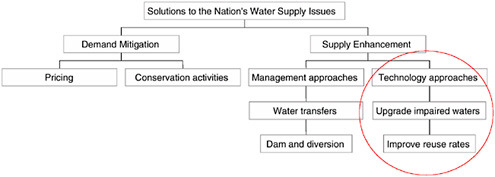
FIGURE 4.2 Hierarchy of the nation’s water solution.
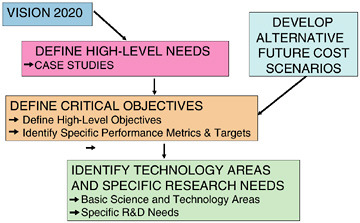
FIGURE 4.3 The architecture of the roadmap process.
The focus in the Roadmap is on technology approaches to the problem—ways of upgrading impaired waters and also improving reuse. The technologies involved in both of these activities are very similar, and are captured in the Roadmap. The structure of the Roadmap is outlined in Figure 4.3. It cascades from the vision but really involves an interactive process and defines high-level critical objectives, which are the driving force for the map. The next steps involve defining the technology areas that might be used to solve the problem.
Needs
Based on the challenges outlined in the Roadmap, the desalination needs identified include reducing costs, ensuring the quality of reclaimed saline water, and enabling the disposal of concentrate. Reduction in the cost of the desalination process is especially critical for small towns. In some places, the cost of desalination processes is so high that local communities are unable to have any kind of development. Efforts must also be made to control the amount of organic or biological materials that remain in reclaimed water. Disposal of concentrate is of particular concern to inland cities. In Phoenix, for example, there is a natural inflow of 1 ton of salt per person per day into the valley, but no water that flows out. A possible solution is to develop beneficial uses for the concentrate. Figure 4.4 shows the distribution of saline aquifers in the United States, indicating the need for salt to be managed on a regional basis. Also, if drinking water is to be reclaimed from saline water, there will have to be better understanding of existing problems and better characterization of saline aquifers.
Coastal communities face different desalination challenges. A majority of the U.S. population lives within 60 miles of the coast, and this percentage is growing. Different coastal regions also have varying needs. For example, in Tampa Bay, aquifer replenishment is a major issue. There are 973 people moving to Florida each day. These are new,
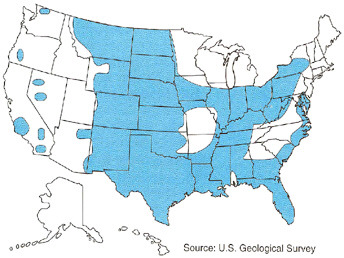
FIGURE 4.4 Potentially usable saline aquifers in inland urban and rural areas.
permanent residents, and the population is growing by almost a thousand people per day. At the same time, the area receives 55 inches of rain a year. Unfortunately, this rainfall is not able to penetrate into the groundwater system and provide an adequate supply of fresh water because of carbonate substrata underneath the ground. Only 10 percent of the water penetrates. The reality is that the Everglades and other areas in Florida are very close to a marginal water environment.
Related to desalination needs also is the need to reduce reliance on surface waters. Around 1970, the amount of groundwater withdrawals in the United States reached its peak. For the past 35 years, there have been no increases in groundwater withdrawals. All of the water added since the mid-1970s has been in surface water. Oil and gas reservoirs and coal bed methane represent huge potential new sources of water. The typical oil and gas or oil field production facility produces seven times as much water as it does oil, which means that there is available water. New Mexico is considering adding some of that water to the Pecos River as a way of meeting interstate compacts between Mexico and Texas. The main issue relative to oil and gas is developing cost-effective pretreatment to deal with small hydrocarbon residuals, again reducing the cost and ensuring water quality standards.
Objectives
Critical objectives are the highest-level milestones defining the targets that a technology must meet by a given time. They are motivated by a specific need, measured by a welldefined metric, and aimed at a specific target. In the Roadmap document, near-term objectives are for 2008, and these were set to extend current technology. Longer-term objectives were set by the Roadmap committee to meet
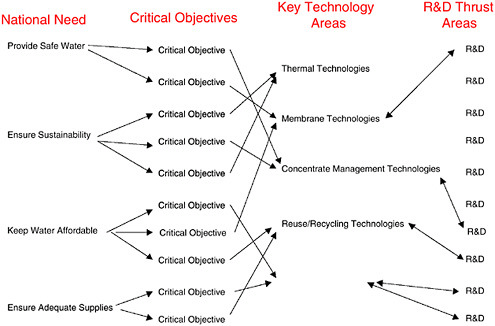
FIGURE 4.5 The Roadmap structure.
longer-term national needs and to end up with ways of meeting the full spectrum of water users.
The Roadmap structure (Figure 4.5) shows the central role that the critical objective plays in the process; critical objectives apply for all of the technologies. For example, the national need to keep water affordable is addressed by critical objectives that provide specific reduction milestones. Examples of near-term critical objectives include a 20 percent reduction in cost, a 20 percent increase in efficiency, and a 20 percent reduction in the cost of zero liquid discharge; all are deemed possible. There is no single “right” way of meeting the metrics for a critical objective—multiple technologies or combinations of technologies may provide radically different solutions that all meet a given metric. Five broad technology areas were identified that encompass the spectrum of desalination technologies and may, individually or in combination, meet a given (or several) critical objectives. Current-generation desalination technologies are drawn from these five technology areas, and it is from these areas that revolutionary, next-generation desalination technologies are expected to emerge.
Figure 4.6 gives the standard breakdown of the costs to treat water; roughly 37 percent of seawater desalination is assigned to fixed charges, and this translates into things such as flux through membranes because that defines the plant size. Electronic power is 44 percent of the cost to treat sea-water—one place for a significant amount of improvement. The longer-term critical objectives are much more aggressive.
There are many diagrams in the Roadmap similar to Figure 4.7 that highlight all of the technologies and show their relation to the critical objectives.
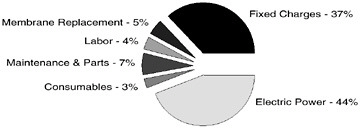
FIGURE 4.6 Standard breakdown of costs to treat water.
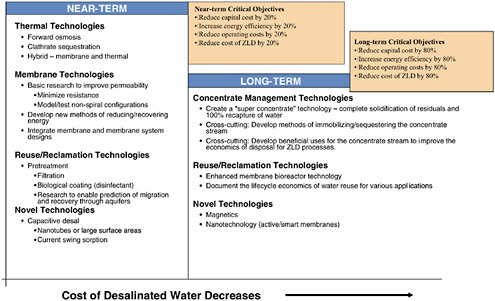
FIGURE 4.7 Technologies related to desalination objectives
Technology
Five technology groupings were identified by the Roadmap executive committee. These groupings are based on historical areas of research. Thermal technologies were invented some 2,000 years ago. Membrane technologies were invented in the 1960s. Research thrust areas for membrane technologies are shown in Box 4.1. Reuse and recycling employ many of the same concepts present in the first two technology areas; however, they are aimed at reclaiming previously used water. Concentrate management is now growing in importance as we realize that disposal of concentrate in many cases is the limiting part of desalination processes. Alternative technologies include any desalination methodology not included in the other areas.
Example Technology: VARI-RO
One solution methodology that was suggested is a variable flow, integrated pumping, and energy recovery system for supplying feedwater to RO membranes, called the VARI-RO (Figure 4.8). Normally, in an RO plant you have to pressurize water to drive it through some membrane. The VARI-RO process seeks to conserve energy by using the return pressure from the RO membrane to assist in powering this piston-driven process. For seawater RO, the input water pressure is about 1,200 psi (pounds per square inch). The discharge pressure from the membrane is 1,150 psi. All RO systems seek to use this energy. The standard method is use of the Pelton wheel. Because of fluid slip, conventional technologies are not completely efficient. The VARI-RO process has fewer losses. In normal operation three pistons operate in sequence and smooth water flow results.
In the integrated pumping and energy recovery (IPER) model, pumps are driven by electric motors and these systems may save 25 percent of the energy cost. In the direct drive engine (DDE) model, the engine is connected directly to the pump and this system is projected to conserve 70 percent of the energy used. Benefits are 25-70 percent energy savings. The IPER model of this unit has been pilot tested, and energy savings have been demonstrated. The DDE version is conceptual, and no model has yet been built.
This particular method for gathering, protecting, or saving a lot of the energy that was originally part of the VARI-RO process has not generated a lot of enthusiasm in the industry because other techniques come very close. As much as 95 percent of the energy that is part of this reject stream is
|
BOX 4.1 Near-Term Thrust Areas
Long-Term Thrust Areas
|
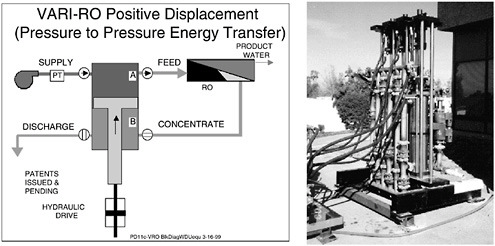
FIGURE 4.8 The VARI-RO positive displacement process and pilot plant.
already recovered. The amount of improvement by this technology is very small. However, another part of this process is interesting. Energy use was 44 percent of the cost, but a large part of that is electrical energy, which is 30 percent more efficient to generate. The idea then is to couple a Brayton cycle engine to this. Instead of an electrical power source, a primary fuel (fossil, hydro, etc.) is used. In using the primary fuel, potential savings could be half of that 44 percent of energy use.
Thermal Technologies
This approach involves a thermal distillation process to produce fresh water from seawater and represents about one-half of the world’s installed desalination capacity. R&D thrust areas for thermal technologies are shown in Box 4.2.
One advantage of thermal technologies is that even though a lot of energy is put into them to deal with evaporating water, the potential exists for recovering almost all of it if the waste heat is used. For example, Jim Beckman at Arizona State developed a process in which the evaporating fluid and the condensing fluid are separated by a thin membrane, with intimate transfer of heat from one side to the other. In the chemical engineering sense, there are thousands, if not more, theoretical trays existing in this process with very efficient transfer of heat and the potential for significant energy savings. This particular process might be used for concentrate streams, trying to recover as much of the concentrate left over as possible. In seawater desalination dealing with the concentrate is not such a big issue.
|
BOX 4.2 Near-Term Thrust Areas
Long-Term Thrust Area
|
Concentrate Management
In concentrate management, one idea is to develop a superconcentrate technology, complete solidification of the residuals, and 100 percent recapture of the water. R&D thrust areas for concentrate management are shown in Box 4.3. The technique that SNL is examining at present is one in which you sequester salts in a nonleachable solid. By adding sodium chloride to the nonleachable solid, a supernatant develops that is clean of salts and has some potential for being applicable in a lot of desert environments under conditions where one must worry what to do with salts.
There are many advantages to this particular process. The solids may be additives that are used as construction materials if they are truly nonleachable. Reactions do occur at ambient conditions. The real problem is one of economics. Any time you use materials for the treatment of a commodity such as water, you must worry about all of the materials that are used.
Alternative Technologies
In alternative technologies, using magnetism is an option. Most are familiar with the idea of electric field-driven transfer of ions. Electric field-driven transfer of ions is a very reasonable option because if you make a separation smaller, there is no limit to the energy requirements. R&D thrust areas for alternative technologies are listed in Box 4.4.
A group at Sciperio has been investigating this alternative approach. The proposed device concept is capable of deionizing any fluid using magnetic fields and their resultant Lorentz forces. This effort is being funded by the Defense Advanced Research Projects Agency (DARPA) and is referred to as the Lorentz Ionic Separation Apparatus (LISA). The Sciperio team estimates that LISA will be able to improve water flux, decrease energy consumption by three- to fivefold, and provide sizable improvements in the ability to process in-line ionic contaminants in the water stream.
RESEARCH PROGRAM STRUCTURE AND IMPLEMENTATION STRATEGY
The diagram in Figure 4.9 illustrates the structure of research and technology development that will be driven by the framework provided by the Roadmap. The structure of a research program that will develop novel technologies must be carefully considered. Using the technology Roadmap as a framework, the sequence of technical qualification of research, followed by laboratory-scale experimentation, then pilot-scale evaluation, and finally demonstration must be carried out for each technology thrust area.
The implementation of novel technologies in a tight financial market requires that any new technology be com-
|
BOX 4.3 Near-Term Thrust Areas
Long-Term Thrust Areas
|
|
BOX 4.4 Near-Term Thrust Areas
Long-Term Thrust Areas
|
pletely proven in order to achieve its full deployment. Completely proving a new technology requires that this technology proceed through the demonstration stage. By carrying only the most promising research to the next and more costly levels, a cost-effective research program is constructed.
The other part of desalination that ends up being a problem is that we function in an environment where the rates of return are incredibly small. We have single-digit rates of re
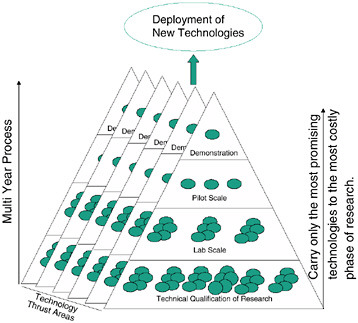
FIGURE 4.9 Structure of the research and technology development.
turn for most water utilities. The end result is that when you think about how it is that we are going to get new technologies deployed, you need to, as part of some kind of government program, establish some method of assisting with the deployment of new technologies.
In the low-risk, low-reward environment, there is little driving force for utilities to try field processes on their own. The end result is that the only way you get a lot of new
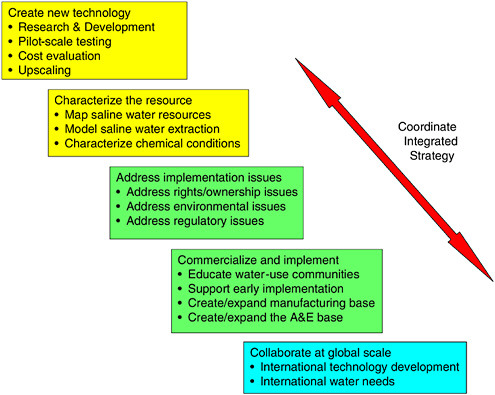
FIGURE 4.10 Integrated implementation strategy
technologies in the field is by having demonstration projects. The program that we have been trying to move forward with the government, with both congressional and administration support, is to have a demonstration facility that actually helps with this high end of moving the technologies to the field, which implies that there is a huge amount of work that goes on underneath that.
Figure 4.10 provides a view of the comprehensive implementation strategy. The Roadmap actually sits in the upper left-hand corner, where new technologies are developed. Activity is also needed that deals with characterizing the resource. Many implementation issues such as owners’ rights, states’ rights, and regulatory issues must be dealt with. The whole idea of commercializing a new venture requires an additional level of interaction. To deploy any of these strategies on a global scale, they will have to be advanced through the process.
DISCUSSION
Changing Technologies
Don Burland, of the National Science Foundation, remarked that the discontinuity illustrated in Figure 4.1 is caused by changing technologies. He wondered if Dr. Hinkebein knew of any technologies that can bring the trajectory down in that way.
Dr. Hinkebein said such potential future advancements will be in the area of cross-fertilization technologies currently in existence for other applications. These technologies are now being looked at for water applications. He said that broadly examining all separation technologies many lead to solutions for the future.
In particular, Hinkebein thought recent advances in understanding the nanometer scale might bring such improvements. He said that when you start to look at the energy
requirements to move water through a RO membrane, there is a minimum amount of energy required. Currently this is only about three to five times the minimum energy in the typical RO membrane. Therefore, there is still room for growth, but the methods to make that growth occur will have to be evolutionary in scope, and not revolutionary.
Dr. Hinkebein also said that with nanotechnology, it becomes possible to move ionic species very small distances. This presents the potential for separating fresh water and concentrate in a different kind of environment where the minimum energy is constrained only by how small the flow field can be made.
Escalating Costs
Tom Dillion, of Science Applications International Corporation (SAIC), wanted to know how the escalating cost of energy might affect the future of this technology.
Dr. Hinkebein replied that if the cost of energy and the state of the environment stay relatively stable, RO could be made more efficient. He said that scenario was presented here. The other scenario is one in which the cost increases as you go forward in time. You try to make the same kind of improvements, recognizing that future costs are not going to look as they do on the continuation scenario.
Disposal Issues
Tom Dillion, of SAIC, was also interested in specific solutions for dealing with brine issues in Southern California.
Relative to concentrate disposal, Dr. Hinkebein said that there are a couple of issues in Southern California. For facilities that are located on the sea, where you have in essence a huge source of saline water and a huge sink of saline water, the primary issues that have to be addressed are the regulatory issues of how to meet the required concentrations and conditions when we send our rejected water back to the sea.
Dr. Hinkebein discussed brine disposal issues from when he worked on the Gulf coast. He said that the EPA required that brine be deposited about 7 miles offshore so that there would be at least 500 m of ocean or water above the point of discharge.
A similar exercise could be done on the West Coast, Dr. Hinkebein said, and it would be at a small cost—slightly higher than the cost of disposal. He said that it would be about a penny additional cost and in the global scheme of things this would be negligible.
RO Implementation
Fareed Salem, of ConocoPhillips, congratulated Dr. Hinkebein on developing the Roadmap. He felt it was greatly needed. He also pointed out that the current status of desalination is due to U.S. government-funded research that started in the 1960s. Mr. Salem said that despite the fact that a lot of RO needs are overseas, he did not feel that other governments, at least those who greatly need this technology, have invested in basic development or in putting together a Roadmap like the one presented here.
Mr. Salem also gave some words of caution about the water industry. He said that it is very conservative and whenever a new technology comes along it takes a long time before it gains acceptance. He said he hoped that equal weight would be given to the implementation of these technologies as well as to the risks associated with the acceptance of newer technologies.
Dr. Hinkebein agreed that barriers exist in implementing and accepting new desalination technologies. He gave an example of an energy recovery system that a company had difficulty placing within continental U.S. boundaries. He said that even though the company demonstrated the effectiveness of the system in field tests and a variety of other applications, no place would take the risk of putting that technology in its plant and no funding was available from the standard mechanisms in the United States. Dr. Hinkebein said the company ended up going offshore to gain the necessary operational experience to bring the technology back to the United States and sell it. He said this is a very common problem, and it is one that is recognized as a huge impediment to getting new technology in the field.
Definition of Desalination
Eli Greenbaum, of Oak Ridge National Laboratory, wanted a clarification of the definition of desalinated water, in terms of percentage salt reduced.
Dr. Hinkebein responded that there are many answers to this question. He said that in general, desalinated water is one that meets the objective or the stated need of the water. For example, if the need is to meet drinking water secondary standards, the secondary standards for sodium chloride are about 500 mg NaCl per liter.
Dr. Greenbaum further wanted to know what percentage reduction that would be from the starting amount.
Dr. Hinkebein said that it depends. If the water source is inland brackish material it would be about 25 percent of the starting point, or in starting with seawater it would be about a 95 percent reduction.
Dr. Greenbaum additionally wanted to know if the factor of three to five in energy that was mentioned early was from the minimum energy of separation (mixing).
Dr. Hinkebein responded that the reduction is from the osmotic pressure that is required to drive the water through the membrane with a certain salt concentration. He said that it depends on the molal concentration of each species in the water.
RO and Power Plants
Tom Torre, of Accumulated Technologies, commented that desalination plants being proposed in San Diego are taking an alternative approach to the disposal issue by working with power plants. He said that this is beneficial for two reasons. The hot water coming from the plant gets used, which means improved efficiency in the RO system, and the amount of concentrate going into the outflow is negligible.
Mr. Torre emphasized that the water business is very conservative. He felt that it would be difficult to get enough return on investment to get private industry to do much. He said that as someone pointed out earlier, it was the situation in Iraq that actually pushed the technology along.
Dr. Hinkebein said that he agreed and explained that this was one of the reasons SNL got involved. As a national issue, SNL recognizes that long-term water supply issues in the United States represent a destabilizing environment in which all of us are functioning now. The destabilizing environment, both inside and outside the country, is something that has to be dealt with to make the world a more stable place. He agreed that the government does not expect private industry to do a lot.
Demonstration Projects
Jeff Perl, of Chicago Chem, supported the need for demonstration projects. He said that it would be difficult to convince anyone to go forward without demonstrated effectiveness and economic viability.
Mr. Perl said that another related area includes turndown ratios using environmental “pump-and-treat” projects. He talked about Dr. Hinkebein mentioning that oil fields have a 7-to-1 turndown ratio and that with pump-and-treat the ratio is infinity to one. He said that essentially all of the water being pumped out of the ground is water with a very small level of contaminants. He said that EPA has a very nice test bed testing program with the Department of Defense (DOD), the Environmental Security Testing Program, and others. He wondered if Dr. Hinkebein had looked at teaming up with the EPA to demonstrate the improvements. He also wanted Dr. Hinkebein to comment on the pump-and-treat water generated.
Dr. Hinkebein responded that relative to teaming with the EPA, the next stage of this process is the development of a strategy that includes pairing up with a number of partners. He said that all of the work that EPA, DOD, and DARPA are doing is definitely part of the issue. The Nuclear Regulatory Commission, Army Corps of Engineers, and others will be among the future partners involved. Probably some of the biggest groups to get involved are industry research foundations such as the American Water Resources Association and National Water Research Institute.













